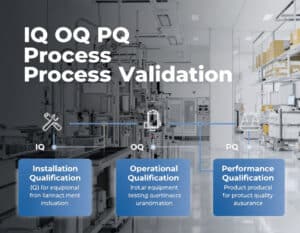
现代制造业运营需要对车间变化和供应链波动做出即时、数据驱动的响应。以下人工智能提示功能如同专业的工程工具,旨在执行复杂的计算和场景建模,这些计算和建模对于手动或使用标准软件而言都难以完成。通过处理特定的运营输入(例如原始生产数据、机器维护日志或详细的工艺参数),它们可以生成可直接使用的输出,例如优化的生产计划、设备故障的根本原因分析报告以及拟议工艺变更的成本影响模拟,从而使管理人员和工程师能够基于定量分析做出明智的决策。
这份包含 25 个以上提示的清单提供了一个全面的工具包,涵盖了制造职责的各个方面:这些提示被归类到关键领域,包括用于动态重新排程和优化的生产计划和调度;用于生产线平衡和价值流图绘制的流程和效率优化;以及用于预测性排程和根本原因分析的维护和设备管理。其他类别还包括用于详细成本估算和自制/外购决策的成本和资源管理,以及用于自动化标准操作程序 (SOP) 的报告和文档编制。 失效模式及影响分析 生成、供应链和物流整合,用于风险评估和物流优化,确保对工厂和运营控制采取整体方法。
生产计划与调度
[prompt_formatter title=”Dynamic Production Rescheduling for Supply Chain Disruptions” description=”Analyzes a production schedule, bill of materials, and a disruption alert (e.g., delayed shipment of a critical component). It then generates a revised production plan that minimizes delays and costs by suggesting alternative suppliers, modified production sequences, or adjusted inventory usage.” temperature=”0.7″ thinking=”high”]## CONTEXT⸻You are tasked with dynamically rescheduling production in response to a supply chain disruption. You have access to the current production schedule, the bill of materials (BOM), and a disruption alert detailing the issue (e.g., delayed shipment of a critical component). Your goal is to minimize delays and costs by suggesting alternative suppliers, modified production sequences, or adjusted inventory usage.⸻⸻## INPUTS⸻1. Current Production Schedule: {current_production_schedule}⸻2. Bill of Materials (BOM): {bill_of_materials}⸻3. Disruption Alert: {disruption_alert}⸻4. List of Potential Alternative Suppliers: {alternative_suppliers}⸻5. Inventory Levels: {inventory_levels}⸻⸻## INSTRUCTIONS⸻1. Analyze the current production schedule and identify the stages affected by the disruption detailed in the disruption alert.⸻2. Examine the BOM to determine the critical components impacted by the disruption.⸻3. Evaluate the list of potential alternative suppliers to identify viable options for the disrupted component(s), considering lead times and costs.⸻4. Assess current inventory levels to determine if existing stock can be used to mitigate the disruption.⸻5. Propose modifications to the production sequence to accommodate the disruption, ensuring minimal impact on overall production timelines.⸻6. Calculate the cost implications of each proposed change, including supplier costs, inventory usage, and potential overtime or expedited shipping.⸻7. Generate a revised production plan that incorporates the most cost-effective and timely solutions.⸻⸻## OUTPUT FORMAT⸻Provide a detailed report including:⸻- Summary of the disruption and its impact on the production schedule.⸻- List of alternative suppliers considered and the selected option(s) with justification.⸻- Proposed modifications to the production sequence and inventory usage.⸻- Cost analysis of the proposed changes.⸻- Revised production schedule with updated timelines and resource allocations.[/prompt_formatter]
[prompt_formatter title=”Multi-Objective Production Batch Size Optimization” description=”Determines the optimal batch size for a list of products by considering multiple conflicting objectives such as minimizing inventory holding costs, reducing setup times, and maximizing production throughput. It processes production data, cost parameters, and constraints to recommend batch sizes for each product.” temperature=”0.7″ thinking=”high”]## CONTEXT⸻You are tasked with optimizing production batch sizes for a list of products. The goal is to balance multiple objectives: minimizing inventory holding costs, reducing setup times, and maximizing production throughput. You have access to production data, cost parameters, and constraints.⸻⸻## INPUTS⸻- List of products: {product_list}⸻- Production data for each product: {production_data}⸻- Cost parameters: {cost_parameters}⸻- Constraints: {constraints}⸻⸻## INSTRUCTIONS⸻1. **Data Analysis**⸻ – Analyze the provided production data for each product in {product_list}.⸻ – Extract relevant metrics such as current batch sizes, setup times, and production rates.⸻⸻2. **Objective Function Formulation**⸻ – Define an objective function that incorporates the following:⸻ – Minimization of inventory holding costs using {cost_parameters}.⸻ – Reduction of setup times based on {production_data}.⸻ – Maximization of production throughput.⸻ – Consider {constraints} in the formulation.⸻⸻3. **Optimization Process**⸻ – Use a suitable optimization algorithm to solve the multi-objective problem.⸻ – Calculate the optimal batch size for each product in {product_list}.⸻⸻4. **Output Recommendations**⸻ – Provide a detailed recommendation for the optimal batch size for each product.⸻ – Include a summary of how each objective was balanced in the final recommendation.⸻⸻## OUTPUT FORMAT⸻- Recommendations for optimal batch sizes:⸻ $product_name: $optimal_batch_size⸻- Summary of objective balancing:⸻ $summary[/prompt_formatter]
[prompt_formatter title=”Predictive Bottleneck Identification in a Production Line” description=”Simulates a production process based on cycle times for each station, transfer times, and planned maintenance schedules. It identifies potential future bottlenecks and suggests proactive adjustments to machine allocation, operator assignments, or buffer sizes to maintain a smooth production flow.” temperature=”0.7″ thinking=”high”]## CONTEXT⸻You are tasked with simulating a production process to identify potential bottlenecks and suggest proactive adjustments. The simulation will be based on the following inputs: cycle times for each station, transfer times between stations, and planned maintenance schedules.⸻⸻## INPUTS⸻- Cycle Times: {cycle_times}⸻- Transfer Times: {transfer_times}⸻- Maintenance Schedules: {maintenance_schedules}⸻⸻## TASKS⸻1. **Data Analysis**⸻ – Analyze the provided cycle times, transfer times, and maintenance schedules to understand the current production flow.⸻⸻2. **Simulation Setup**⸻ – Set up a simulation model using the provided data to mimic the production process.⸻ – Ensure the model accounts for variations in cycle times and transfer times due to maintenance schedules.⸻⸻3. **Bottleneck Identification**⸻ – Run the simulation to identify stations or processes where delays are likely to occur.⸻ – Determine the impact of these bottlenecks on overall production efficiency.⸻⸻4. **Proactive Adjustment Suggestions**⸻ – Based on the identified bottlenecks, suggest adjustments in the following areas:⸻ – Machine Allocation: Recommend reallocating machines to balance the load.⸻ – Operator Assignments: Suggest changes in operator assignments to improve efficiency.⸻ – Buffer Sizes: Propose adjustments to buffer sizes to accommodate potential delays.⸻⸻## OUTPUT FORMAT⸻Provide a detailed report including:⸻- Summary of identified bottlenecks and their potential impact.⸻- Suggested adjustments with rationale for each recommendation.⸻- Visual representation of the production flow before and after adjustments, if applicable.[/prompt_formatter]
[prompt_formatter title=”Optimized Shift Roster Generation Based on Skill Matrix” description=”Creates an optimal weekly shift schedule for a manufacturing cell by taking into account employee availability, skill levels for various tasks, and production demand. The output ensures that each shift has the required skill mix to meet production targets while adhering to labor regulations and employee preferences.” temperature=”0.7″ thinking=”high”]**TASK**⸻Generate an optimal weekly shift schedule for a manufacturing cell.⸻⸻**INPUTS**⸻1. Employee Availability: Provide a list of employees with their available days and hours in the format {employee_availability}.⸻2. Skill Matrix: Provide a matrix...
You have read 12% of the article. The rest is for our community. Already a member? 登录
(同时也是为了保护我们的原创内容不被机器人搜刮)。
创新世界社区
登录或注册(100% 免费)
查看本文其余部分以及所有会员专享内容和工具。
只有真正的工程师、制造商、设计师和营销人员才是专业人士。
没有机器人,没有仇恨者,没有垃圾邮件发送者。















